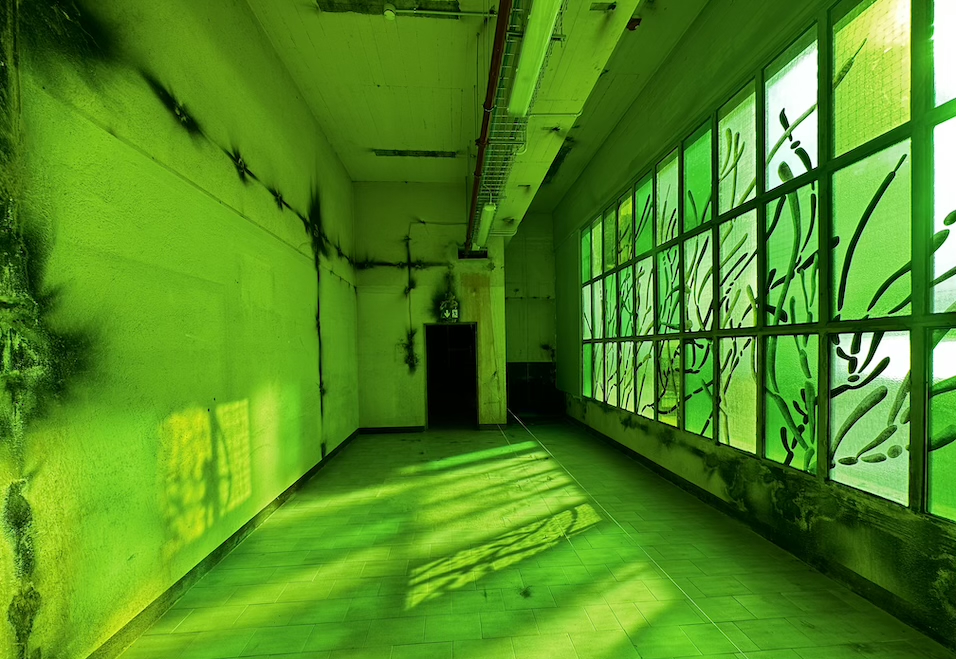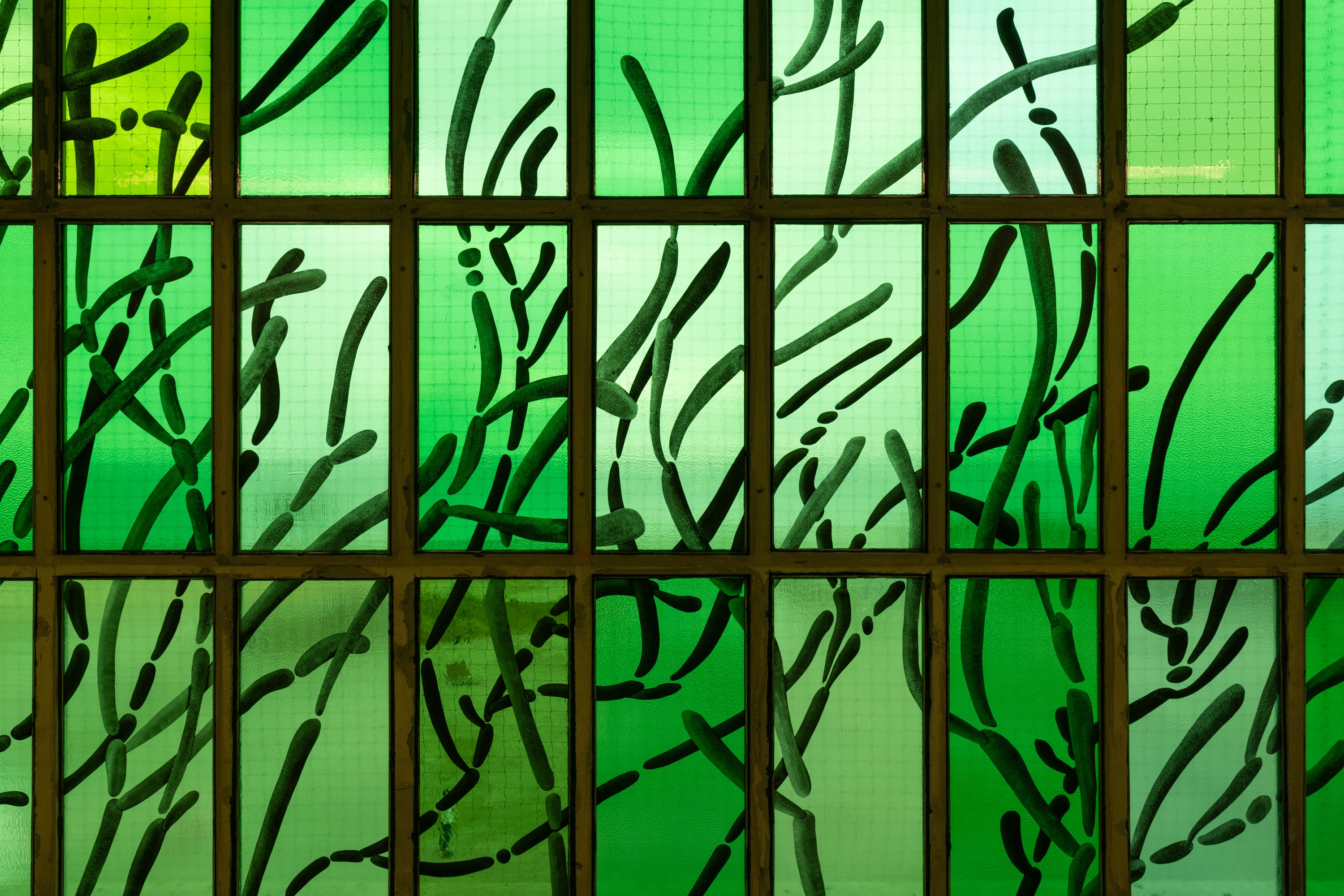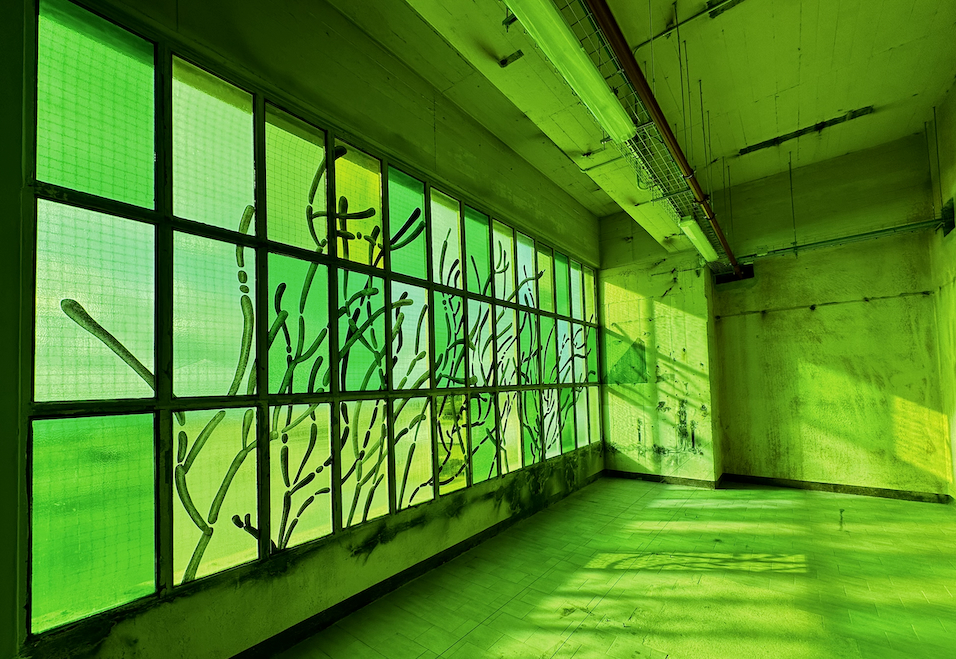2024
Stained glass, 2.96 x 6.49 metres.
Commissioned by Manifesta 15 Barcelona Metropolitana. Supported by Vitralls Bonet.

Installation view, Manifesta 15 Barcelona Metropolitana, The Three Chimneys, 2024. Photo © Alexandra Daisy Ginsberg Ltd.

Installation view, Manifesta 15 Barcelona Metropolitana, The Three Chimneys, 2024. Photo © Alexandra Daisy Ginsberg Ltd.

Installation view, Manifesta 15 Barcelona Metropolitana, The Three Chimneys, 2024. Photo © Alexandra Daisy Ginsberg Ltd.

Detail of Every Thing Eats Light, 2024. Photo © Manifesta 15 Barcelona Metropolitana / Ivan Erofeev.

Installation view, Manifesta 15 Barcelona Metropolitana, The Three Chimneys, 2024. Photo © Alexandra Daisy Ginsberg Ltd.
Every being on Earth eats light: plants convert sunlight into energy to fuel their existence; animals eat plants or eat other animals who eat plants. This fundamental truth reminds us of our absolute dependence on our fellow organisms.
The Three Chimneys is Barcelona’s other monument to the power of light. Nicknamed the ‘Sagrada Familia de l'Electricitat’, (the Sagrada Family of Electricity) or the ‘la ‘Sagrada Familia de los obreros’ (the Sagrada Family of the workers), it was once a digestor of fossil fuels. Now it’s a staggering technological relic of the human desire to emancipate ourselves from our natural world.
Ginsberg commemorates the evolution of chloroplasts, the plant organelles that capture sunlight and convert it into energy with her stained-glass window depicting Proterocladus antiquus. Discovered in northern China, this billion-year-old seaweed fossil – the size of a grain of rice – is considered the sister of the great, great-grandmother of all green plants alive today.
As the plants’ shadows track across the floor with the sun’s path, the window is a memorial for the building’s troubled environmental and social history, for the present need for humans to see ourselves differently amidst ecological crises, and for a different future - one that we have failed to create.
Read more about the site-specific commission for Manifesta 15 Barcelona Metropolitana here.
The work is located at The Three Chimneys as part of the 'Imagining Futures' section of the 2024 edition of the nomadic biennial.
Installation view, Manifesta 15 Barcelona Metropolitana, The Three Chimneys, 2024. Photo © Alexandra Daisy Ginsberg Ltd.
1/5